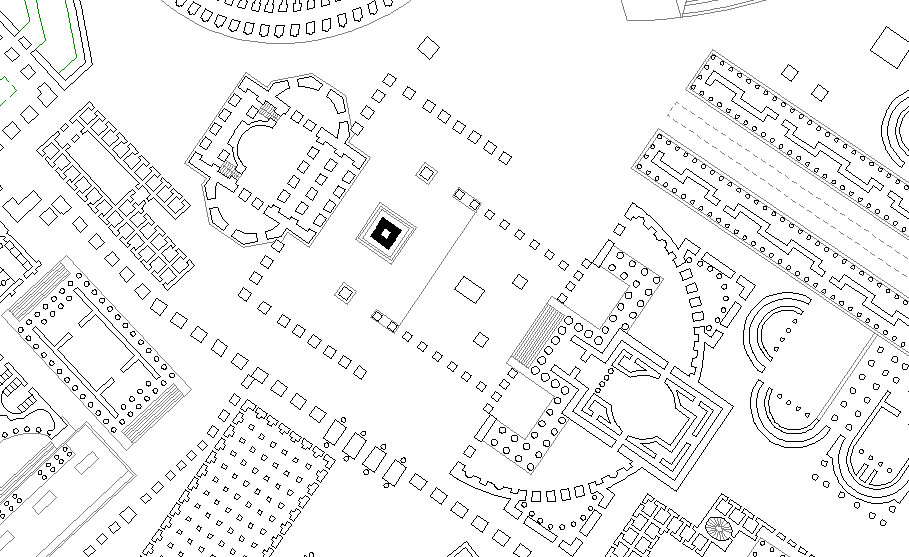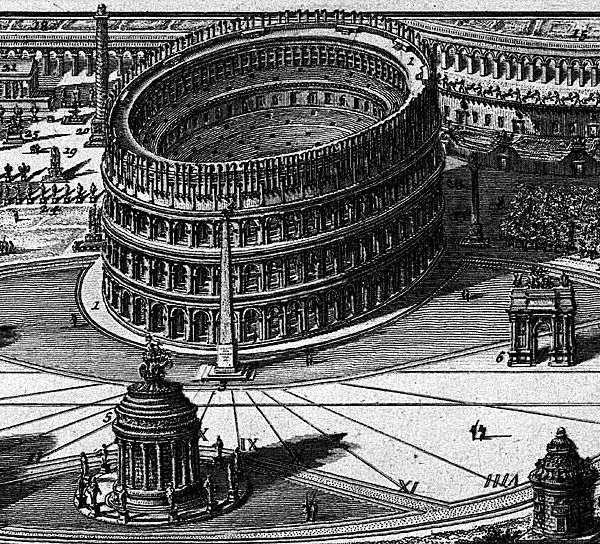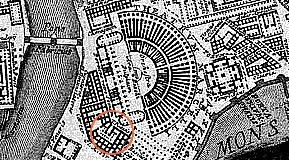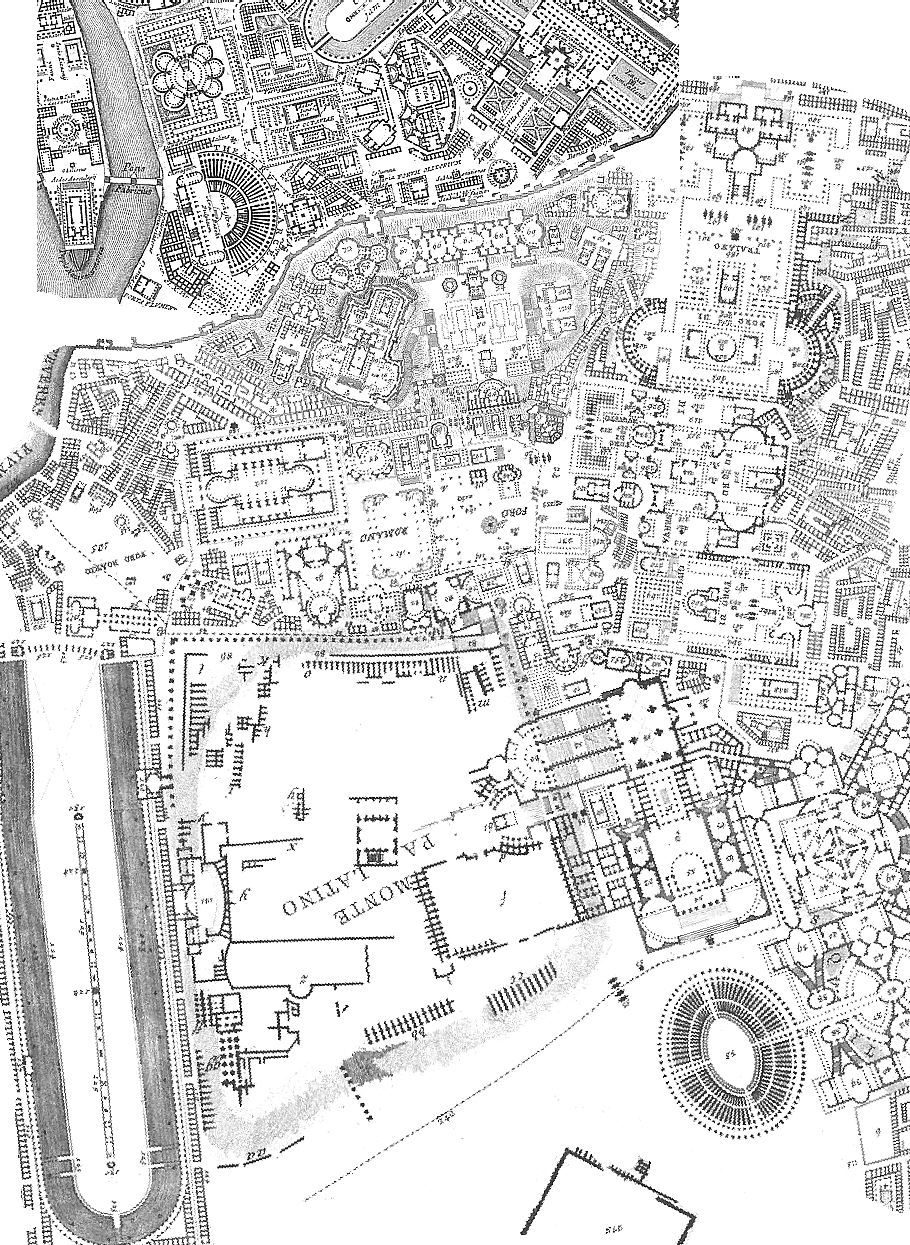Encyclopedia Ichnographica | Columna Cochlidos | 1/1 |
|
...columna M. Aurelii Antonini, which was also called columna cochlis and columna centenaria divi Marci, stood on the west side of the via Lata, opposite the campus Agrippae and was erected some time before 193 A.D. to commemorate the victories of Marcus Aurelius over the Dacians and Marcomani in 172-175 A.D.
|
Vincenzo Fasolo, "The Campo Marzio of G. B. Piranesi". |
|
24 December
Similarly, the T[emplum] Pietatis and the Theatrum Marcelli are delineated together within the Ichnographia, yet the temple of Pietas was destroyed by Augustus in order to make room for the theater of Marcellus.
Of more interest, however, is that Piranesi also omitted buildings that should have been delineated within the Ichnographia. While the Sepulchrum Honorij Imp., the mausoleum built by the emperor Honorius circa 400, is within the Ichnographia, the building that the mausoleum was in actuality attached to, the basilica of St. Peter built by the emperor Constantine circa 330, is not delineated within the Ichnographia.
|
|
Within the first volume of Le Antichitą Romane are a series of plans of ancient Rome: baths of Titus, topographical map, barracks of Tiberius, baths of Caracalla, nymphaeum of Nero, baths of Diocletian, Forum Romanum, Capitoline Hill. When combined with the Ichnographia Campus Martius these plans constitute an almost complete plan of ancient Rome. |
Quondam © 2019.11.10 |




